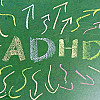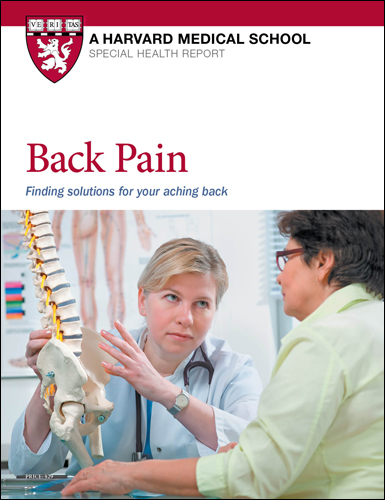
Zinc: What it does for the body, and the best food sources

Respiratory health harms often follow flooding: Taking these steps can help

Tips to leverage neuroplasticity to maintain cognitive fitness as you age

Can white noise really help you sleep better?

Celiac disease: Exploring four myths

What is prostatitis and how is it treated?

What is Cushing syndrome?

Exercises to relieve joint pain

Think your child has ADHD? What your pediatrician can do

Foam roller: Could you benefit from this massage tool?


Finding Relief for Sciatica
In this guide, we will explore sciatica—its causes, risk factors, and treatments. We’ll discuss who is at higher risk for sciatica and how it can be mistaken for other types of nerve pain. We’ll explore at-home care that can help people with sciatica find relief and discuss when it’s advisable to see a doctor. We’ll also discuss medical treatments, such as injections and surgery, that help some people. Finally, we’ll explain ways to prevent sciatica or at least lower your chances of experiencing it.
Other Product Information
When the shooting, burning, tingling pain of sciatica strikes, you need help fast. And once you’ve had an attack, you sure don’t want it to return.
That’s why Finding Relief for Sciatica is so important to you and your loved ones.
This convenient one-stop online source brings you fast, easy-to-apply answers you need as close as your tablet, phone or desktop computer. For example:
- Know your enemy: Detailed illustrations and clear explanations help you visualize the causes of sciatica so you can more confidently apply proven home remedies.
- Are you at risk? Anyone can experience sciatica, but research shows that there are five factors that increase your risk. Find out if you have one of them.
- Easy-does-it stretches help lessen the pain and allow the nerve to heal. Discover the simple stretches that are particularly helpful for sciatica.
- Cold or heat? Ice packs and heat can both be used to treat sciatic pain and help you function better. Find out when to apply each and for how long for best results.
- Top treatments doctors may prescribe: While most sciatica gets better on its own, a doctor may prescribe medications, physical therapy, injections or chiropractic adjustments. (Most people don’t need surgery). Complete details in Finding Relief for Sciatica help you to make the most informed decisions.
- How to help prevent sciatica: Discover the best core exercises to help strengthen your spine…simple exercises to increase strength and flexibility…and stress-reduction techniques to help reduce pain.
- And more!
Finding Relief for Sciatica brings you the best sciatica pain relief and prevention techniques together in one convenient online source. Order now and discover vital information and techniques any time and any place on your phone, tablet or desktop!
About Harvard Medical School Guides
Harvard Medical School Guides delivers compact, practical information on important health concerns. These publications are smaller in scope than our Special Health Reports, but they are written in the same clear, easy-to-understand language, and they provide the authoritative health advice you expect from Harvard Health Publishing.
Prepared by the editors of Harvard Health Publishing in consultation with Zacharia Isaac, MD Associate Chairman, Department of Physical Medicine and Rehabilitation, Brigham and Women’s Hospital Division Chief, Spine Care and Pain Management, Spaulding Rehabilitation Hospital Assistant Professor, Harvard Medical School. 23 Pages (2024)
Risk factors
Anyone can experience sciatica, but research shows that certain factors can increase risk.
Age. Sciatica can occur in any age group. However, discs can start to degenerate in the early 30s, and adults ages 30 to 50 are most at risk for sciatica caused by disc herniations. Spinal stenosis tends to start showing up in adults around age 50 or 55 and is the most common cause of sciatica after age 65. Herniated discs are more common in men, by a two-to-one margin.
Overweight and obesity. Having excess weight can elevate your risk for back pain and sciatica. Over time, carrying this weight can increase stress on the spine and the spinal discs, as well as contribute to inflammation throughout the body
Sedentary lifestyle. People who sit for long periods or are not active are at greater risk for sciatica. Some research suggests that if your job involves a lot of sitting or driving, your spine may tend to become compressed. This can lead to back pain or sciatica.
Manual labor. If your job involves lots of heavy lifting or twisting, or you operate a jackhammer or other equipment that vibrates, you may be at increased risk of sciatica. These activities put a lot of stress on your spine.
Diabetes. Poorly controlled diabetes, caused by chronically high blood sugar, can increase the risk of spinal stenosis that can lead to sciatica. Diabetes also can damage nerves, including the sciatic nerve, which can be painful as well as cause numbness or tingling. If you’re overweight, you’re not active, and you have pain, numbness, or tingling in your legs or feet, talk with your doctor and get a blood sugar test.
Tobacco use. Research shows that using tobacco can accelerate the breakdown of spinal discs. This occurs because smoking damages arteries that carry blood to the vertebrae, which are the source of nutrients for the discs.
About Harvard Medical School Guides
Harvard Medical School Guides delivers compact, practical information on important health concerns. These publications are smaller in scope than our Special Health Reports, but they are written in the same clear, easy-to-understand language, and they provide the authoritative health advice you expect from Harvard Health Publishing.
- What is sciatica?
- Causes of sciatica
- Risk factors
- Home remedies and self-care
- When to see a doctor
- Treatments prescribed by a doctor
- Prevention and coping
- Resources
You might also be interested in…

Back Pain: Finding solutions for your aching back
Treatment of back pain has undergone a recent sea change. Experts now appreciate the central role of exercise to build muscles that support the back. This Special Health Report, Back Pain: Finding solutions for your aching back, helps you understand why back pain occurs and which treatments are most likely to help. This report describes the different types of back problems and the tailored treatments that are more likely to help specific conditions.

Zinc: What it does for the body, and the best food sources

Respiratory health harms often follow flooding: Taking these steps can help

Tips to leverage neuroplasticity to maintain cognitive fitness as you age

Can white noise really help you sleep better?

Celiac disease: Exploring four myths

What is prostatitis and how is it treated?

What is Cushing syndrome?

Exercises to relieve joint pain

Think your child has ADHD? What your pediatrician can do

Foam roller: Could you benefit from this massage tool?
Free Healthbeat Signup
Get the latest in health news delivered to your inbox!
Sign Up

